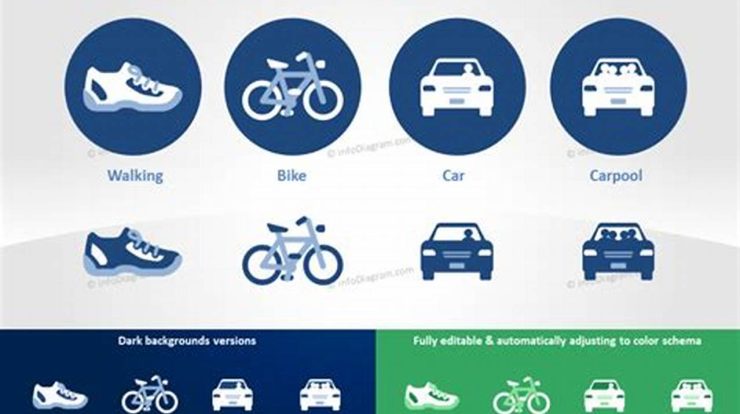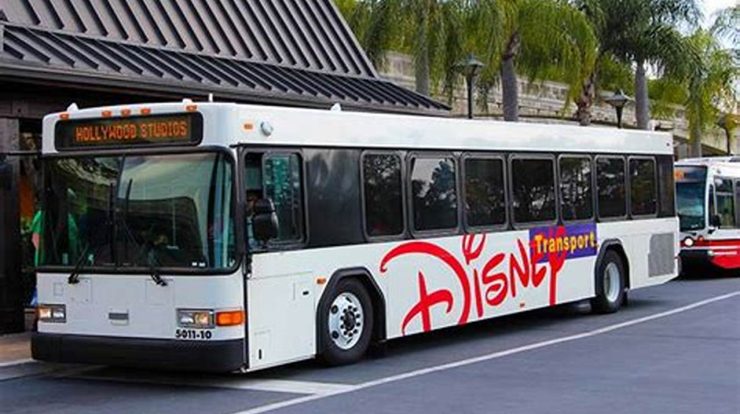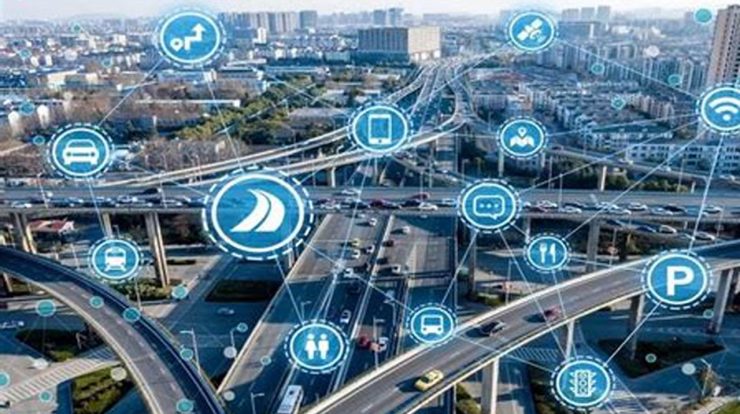Table of Contents
What is green transport? Green transport, also known as sustainable transport, refers to the use of transportation systems that minimize environmental impact and maximize energy efficiency.
Editor’s Note: Green transport is becoming increasingly important as the world faces the challenges of climate change and air pollution.
Our team has conducted extensive research and analysis to compile this comprehensive guide on green transport, providing valuable insights to help you make informed choices.
| Key Differences | Key Takeaways |
|---|---|
| Traditional Transport | Green Transport |
| Relies on fossil fuels | Utilizes renewable energy sources |
| High carbon emissions | Low or zero emissions |
| Contributes to air pollution | Improves air quality |
Main Article Topics:
Green Transport
Green transport plays a crucial role in mitigating environmental impact and promoting sustainability. Here are eight key aspects to consider:
- Energy efficiency: Minimizing fuel consumption and maximizing vehicle performance.
- Renewable fuels: Utilizing alternative fuels such as biofuels and electricity to reduce emissions.
- Public transport: Promoting shared mobility options to reduce individual vehicle usage.
- Active transport: Encouraging walking and cycling to improve health and reduce emissions.
- Infrastructure: Developing infrastructure that supports green transport, such as charging stations and bike lanes.
- Technology: Implementing advanced technologies to improve vehicle efficiency and reduce emissions.
- Investment: Directing investments towards green transport initiatives and research.
- Policy:
These aspects are interconnected and contribute to the overall goal of reducing environmental impact and promoting sustainable transportation. For example, investing in public transport infrastructure encourages people to leave their cars at home, which reduces traffic congestion and air pollution. Similarly, developing energy-efficient vehicles and promoting renewable fuels helps reduce greenhouse gas emissions. By addressing these key aspects, we can create a more sustainable and environmentally friendly transportation system.
Energy efficiency
Energy efficiency is a crucial component of green transport, as it directly reduces the environmental impact of transportation. Minimizing fuel consumption and maximizing vehicle performance leads to lower greenhouse gas emissions, improved air quality, and reduced reliance on fossil fuels.
There are several key strategies for improving energy efficiency in transportation, including:
- Vehicle design: Designing vehicles to be lightweight, aerodynamic, and efficient.
- Engine technology: Utilizing advanced engine technologies such as hybrid and electric powertrains.
- Driving habits: Adopting fuel-efficient driving practices, such as avoiding rapid acceleration and deceleration.
Real-life examples of energy-efficient green transport include:
- Electric vehicles, which produce zero emissions and have significantly lower operating costs than gasoline-powered vehicles.
- Hybrid vehicles, which combine a gasoline engine with an electric motor to improve fuel efficiency.
- Fuel-efficient gasoline-powered vehicles, which utilize advanced engine technologies and lightweight materials to reduce fuel consumption.
Understanding the connection between energy efficiency and green transport is essential for promoting sustainable transportation practices. By adopting energy-efficient vehicles and driving habits, we can reduce our environmental impact and contribute to a cleaner, healthier future.
| Energy Efficiency Measures | Benefits |
|---|---|
| Lightweight vehicle design | Reduced fuel consumption and emissions |
| Aerodynamic improvements | Lower drag and improved fuel efficiency |
| Hybrid and electric powertrains | Reduced or zero emissions and improved fuel economy |
| Fuel-efficient driving practices | Lower fuel consumption and reduced emissions |
Renewable fuels
Renewable fuels play a vital role in green transport by providing sustainable alternatives to fossil fuels. Biofuels, such as ethanol and biodiesel, are derived from renewable biomass sources and offer reduced greenhouse gas emissions compared to traditional fuels. Electricity, when generated from renewable sources such as solar and wind power, produces zero emissions at the point of use.
The adoption of renewable fuels is crucial for mitigating the environmental impact of transportation. Fossil fuels, such as gasoline and diesel, contribute significantly to greenhouse gas emissions and air pollution. Biofuels and electricity offer a cleaner alternative, helping to reduce emissions and improve air quality.
Real-life examples of renewable fuels in green transport include:
- Biodiesel buses, which operate on a blend of biodiesel and diesel fuel, reducing emissions and improving air quality.
- Electric vehicles, which run entirely on electricity stored in batteries, producing zero emissions during operation.
- Plugin hybrid vehicles, which combine a gasoline engine with an electric motor and battery, allowing for both gasoline-powered and electric-powered driving.
Understanding the connection between renewable fuels and green transport is essential for promoting sustainable transportation practices. By adopting renewable fuels and transitioning away from fossil fuels, we can significantly reduce our environmental impact and contribute to a cleaner, healthier future.
| Renewable Fuel Type | Benefits |
|---|---|
| Biofuels (ethanol, biodiesel) | Reduced greenhouse gas emissions, improved air quality |
| Electricity (from renewable sources) | Zero emissions at point of use, reduced reliance on fossil fuels |
Public transport
Public transportation plays a significant role in green transport by offering shared mobility options that reduce individual vehicle usage. This not only alleviates traffic congestion but also leads to a decrease in greenhouse gas emissions and air pollution.
- Reduced Emissions: Public transportation systems, such as buses and trains, carry multiple passengers, resulting in fewer vehicles on the road. This reduces the overall number of emissions produced compared to individual car usage.
- Improved Air Quality: By encouraging people to leave their cars at home and opt for public transport, air pollution levels are reduced. Public transport vehicles often adhere to stricter emission standards, further contributing to cleaner air.
- Efficient Land Use: Public transportation systems make efficient use of land compared to individual vehicles. Dedicated bus lanes and train tracks allow for the movement of a large number of people without requiring extensive road space.
- Enhanced Accessibility: Public transportation provides accessible mobility options for individuals who may not have access to personal vehicles. This includes people without driver’s licenses, the elderly, and those with disabilities, ensuring equitable access to transportation.
In summary, promoting public transportation as a shared mobility option is a crucial aspect of green transport. By reducing individual vehicle usage, public transportation contributes to a more sustainable and environmentally friendly transportation system.
Active transport
Active transport, which encompasses walking and cycling, serves as a fundamental component of green transport, offering a myriad of environmental and health benefits.
By promoting active transport, we can significantly reduce greenhouse gas emissions and air pollution. Walking and cycling do not produce any tailpipe emissions, unlike motorized vehicles. Encouraging people to leave their cars at home and opt for active transport can lead to cleaner air and a healthier environment.
Furthermore, active transport promotes physical activity, which has numerous health benefits. Walking and cycling regularly can reduce the risk of chronic diseases such as heart disease, stroke, type 2 diabetes, and some types of cancer. It also improves mental health and well-being by reducing stress levels and improving mood.
Real-life examples of active transport in green transport initiatives include:
- Copenhagen, Denmark: Known for its extensive cycling infrastructure, Copenhagen has successfully reduced car usage and improved air quality by prioritizing cycling as a primary mode of transportation.
- Bogota, Colombia: Bogota’s “Ciclovia” program closes major streets to cars on Sundays and holidays, allowing people to enjoy cycling and other recreational activities, promoting active transport and reducing pollution.
Understanding the connection between active transport and green transport is crucial for creating sustainable and healthy communities. By encouraging walking and cycling, we can reduce our environmental impact, improve our health, and create more livable cities.
| Active Transport Benefits | Green Transport Impact |
|---|---|
| Reduced greenhouse gas emissions | Cleaner air and improved environmental quality |
| Improved physical health | Reduced healthcare costs and improved quality of life |
| Enhanced mental well-being | Increased happiness and reduced stress levels |
Infrastructure
Infrastructure plays a critical role in promoting green transport by providing the necessary support for sustainable transportation options. Developing infrastructure that caters to green transport, such as charging stations and bike lanes, encourages people to adopt environmentally friendly modes of transportation.
Charging stations for electric vehicles (EVs) are essential for the widespread adoption of EVs. A robust network of charging stations makes it convenient for EV owners to charge their vehicles, reducing range anxiety and increasing the viability of EVs as a practical transportation option. Similarly, dedicated bike lanes and paths create a safe and accessible environment for cyclists, promoting cycling as a viable alternative to car usage.
Real-life examples of infrastructure supporting green transport include:
- Oslo, Norway: Oslo has invested heavily in EV charging infrastructure, with over 2,000 public charging stations, making it one of the most EV-friendly cities in the world.
- Copenhagen, Denmark: Copenhagen’s extensive network of bike lanes and cycling infrastructure has made cycling the preferred mode of transportation for many residents, reducing traffic congestion and air pollution.
Understanding the connection between infrastructure and green transport is crucial for creating sustainable and livable cities. By investing in infrastructure that supports green transport, we can encourage people to adopt sustainable transportation options, reduce greenhouse gas emissions, improve air quality, and create healthier communities.
| Infrastructure Component | Green Transport Impact |
|---|---|
| Charging stations for electric vehicles | Promotes EV adoption, reduces range anxiety, and increases the viability of EVs. |
| Dedicated bike lanes and paths | Creates a safe and accessible environment for cyclists, encouraging cycling as an alternative to car usage. |
Technology
Technology plays a pivotal role in the advancement of green transport by providing innovative solutions to improve vehicle efficiency and reduce emissions. The implementation of advanced technologies in vehicles contributes significantly to environmental sustainability and cleaner air quality.
One of the most notable technologies is the electric vehicle (EV), which operates solely on electricity stored in batteries. EVs produce zero tailpipe emissions, eliminating the release of harmful pollutants into the atmosphere. By transitioning to EVs, we can significantly reduce greenhouse gas emissions and improve air quality in urban areas.
Hybrid vehicles combine an internal combustion engine with an electric motor and battery to achieve greater fuel efficiency. Hybrids emit fewer emissions compared to traditional gasoline-powered vehicles, offering a practical step towards reducing our reliance on fossil fuels.
Advanced driver-assistance systems (ADAS) also contribute to green transport by enhancing vehicle safety and efficiency. Features such as adaptive cruise control, lane departure warning, and automatic emergency braking help drivers maintain optimal speed, reduce the risk of accidents, and improve overall fuel economy.
| Advanced Technology | Green Transport Impact |
|---|---|
| Electric Vehicles (EVs) | Zero tailpipe emissions, reduced greenhouse gas emissions, improved air quality |
| Hybrid Vehicles | Improved fuel efficiency, reduced emissions compared to traditional gasoline-powered vehicles |
| Advanced Driver-Assistance Systems (ADAS) | Enhanced vehicle safety, improved fuel economy, reduced risk of accidents |
Understanding the connection between technology and green transport is crucial for promoting sustainable transportation practices and mitigating our environmental impact. By embracing advanced technologies that improve vehicle efficiency and reduce emissions, we can create a cleaner and healthier future for generations to come.
Investment
Investment in green transport initiatives and research is crucial for the advancement and widespread adoption of sustainable transportation practices. By directing funds towards these areas, we can accelerate the development of innovative technologies, improve infrastructure, and create a cleaner, more sustainable future.
Green transport initiatives encompass a range of projects and programs aimed at reducing the environmental impact of transportation. These initiatives may include the development of electric and hybrid vehicles, the improvement of public transportation systems, and the promotion of walking and cycling. Research plays a vital role in supporting these initiatives, as it helps us to better understand the challenges and opportunities associated with green transport and develop effective solutions.
Real-life examples of successful green transport investments include:
- The Norwegian government’s investment in electric vehicle infrastructure: Norway has made significant investments in charging stations and other infrastructure to support the adoption of electric vehicles. As a result, Norway has one of the highest rates of EV adoption in the world.
- The European Union’s investment in renewable energy research: The EU has invested heavily in research into renewable energy sources, including solar and wind power. This research has helped to make renewable energy more affordable and accessible, which is essential for the transition to green transport.
Understanding the connection between investment and green transport is crucial for creating a more sustainable transportation system. By directing investments towards green transport initiatives and research, we can accelerate the development of new technologies, improve infrastructure, and promote sustainable transportation practices. This will lead to a cleaner, healthier, and more sustainable future for all.
| Investment Area | Green Transport Impact |
|---|---|
| Electric vehicle infrastructure | Increased EV adoption, reduced greenhouse gas emissions |
| Renewable energy research | Reduced reliance on fossil fuels, cleaner air quality |
| Public transportation improvements | Reduced traffic congestion, improved air quality, increased accessibility |
Policy
Policy plays a critical role in supporting and promoting green transport. Governments can implement various policies to encourage the adoption of sustainable transportation practices and reduce the environmental impact of the transportation sector.
One important policy area is the establishment of emission standards for vehicles. By setting stricter emission standards, governments can encourage automakers to produce more fuel-efficient and less polluting vehicles. This can lead to a reduction in greenhouse gas emissions and improved air quality.
Another important policy area is the promotion of public transportation and active transport. Governments can provide financial incentives for public transportation systems and create infrastructure that makes it easier for people to walk and cycle. This can help to reduce traffic congestion, improve air quality, and promote healthier lifestyles.
Real-life examples of successful green transport policies include:
- The European Union’s Emissions Trading System (ETS) has helped to reduce greenhouse gas emissions from power plants and industrial facilities. The ETS has also encouraged investment in renewable energy and energy efficiency.
- The Chinese government’s subsidy program for electric vehicles has helped to make EVs more affordable for consumers. This has led to a significant increase in EV sales in China.
Understanding the connection between policy and green transport is crucial for creating a more sustainable transportation system. By implementing supportive policies, governments can encourage the adoption of green transport practices and reduce the environmental impact of transportation.
| Policy Area | Green Transport Impact |
|---|---|
| Emission standards for vehicles | Reduced greenhouse gas emissions and improved air quality |
| Promotion of public transportation and active transport | Reduced traffic congestion, improved air quality, and promoted healthier lifestyles |
Frequently Asked Questions on Green Transport
The transition to green transport raises various questions and concerns. This FAQ section aims to provide concise and informative answers to common queries.
Question 1: What are the key benefits of green transport?
Green transport offers numerous advantages, including reduced greenhouse gas emissions, improved air quality, decreased reliance on fossil fuels, and enhanced public health through the promotion of active transport options like cycling and walking.
Question 2: What are the different types of green transport?
Green transport encompasses various modes of transportation that minimize environmental impact, such as electric vehicles, hybrid vehicles, public transportation, walking, and cycling.
Question 3: How can I contribute to green transport?
Individual actions can significantly contribute to green transport. Consider using public transportation, opting for walking or cycling for short distances, and choosing fuel-efficient vehicles when possible. Additionally, advocating for supportive policies and investing in green transport initiatives can amplify your impact.
Question 4: What are the challenges associated with green transport?
The adoption of green transport faces certain challenges, including the high upfront cost of electric vehicles, limited charging infrastructure, and the need for behavioral changes towards sustainable transportation practices.
Question 5: What is the role of technology in green transport?
Technology plays a crucial role in green transport development. Innovations like electric vehicles, hybrid powertrains, and advanced driver-assistance systems enhance vehicle efficiency and reduce emissions. Additionally, smart traffic management systems optimize traffic flow, reducing congestion and emissions.
Question 6: How can green transport contribute to a sustainable future?
Green transport is a cornerstone of sustainable development. By reducing greenhouse gas emissions and promoting clean energy sources, it helps mitigate climate change. Furthermore, green transport fosters healthier communities through improved air quality and the encouragement of active lifestyles.
Understanding these key questions and answers can clarify misconceptions and empower individuals to make informed choices that contribute to a greener and more sustainable transportation system.
Transitioning to the next article section: Exploring the Environmental Benefits of Green Transport
Green Transport Tips
Adopting green transport practices offers numerous environmental benefits. Here are some practical tips to help you make a positive impact:
Tip 1: Choose Public Transportation or Carpool
When feasible, opt for public transportation such as buses or trains. Carpooling with colleagues or neighbors can also reduce the number of vehicles on the road, minimizing emissions and traffic congestion.
Tip 2: Walk or Cycle for Short Distances
Consider walking or cycling for short distances instead of driving. This not only reduces emissions but also promotes physical activity and improves your health.
Tip 3: Consider Electric or Hybrid Vehicles
If you must drive, consider purchasing an electric or hybrid vehicle. Electric vehicles produce zero tailpipe emissions, while hybrids offer better fuel efficiency compared to traditional gasoline-powered cars.
Tip 4: Practice Eco-Driving Techniques
Adopt eco-driving techniques such as smooth acceleration, avoiding rapid braking, and maintaining a steady speed. These practices can improve fuel efficiency and reduce emissions.
Tip 5: Maintain Your Vehicle Regularly
Regular vehicle maintenance, including tune-ups and tire inflation checks, ensures optimal performance and fuel efficiency. A well-maintained vehicle produces fewer emissions.
Tip 6: Reduce Air Travel
Air travel contributes significantly to greenhouse gas emissions. Consider alternative modes of transportation for shorter distances or explore video conferencing for business meetings.
Tip 7: Support Green Transport Initiatives
Advocate for policies that promote green transport, such as investments in public transportation infrastructure, bike lanes, and electric vehicle charging stations. Your support can contribute to a larger-scale shift towards sustainable transportation.
Incorporating these tips into your daily routine can make a meaningful difference in reducing your carbon footprint and contributing to a greener, healthier environment.
Conclusion
Green transport has emerged as a critical solution to address the environmental challenges posed by traditional transportation practices. This article has explored the multifaceted nature of green transport, encompassing various modes, technologies, and policies aimed at reducing emissions, improving air quality, and promoting sustainable practices.
The adoption of green transport practices offers a path towards a more sustainable future. By embracing electric and hybrid vehicles, utilizing public transportation and active transport options like cycling and walking, and supporting green transport initiatives, we can collectively reduce our carbon footprint and create a cleaner, healthier environment for generations to come.
Youtube Video:









